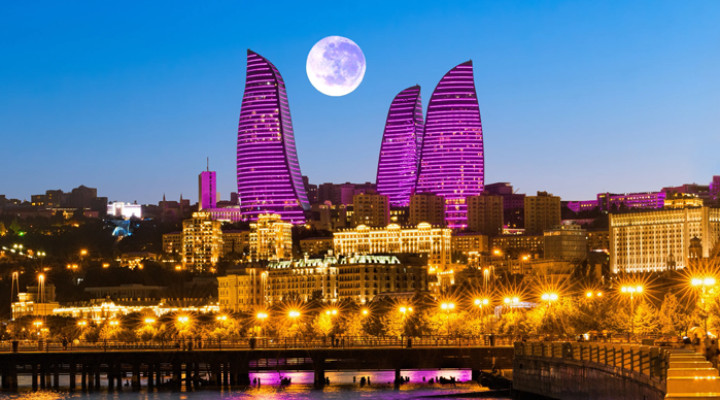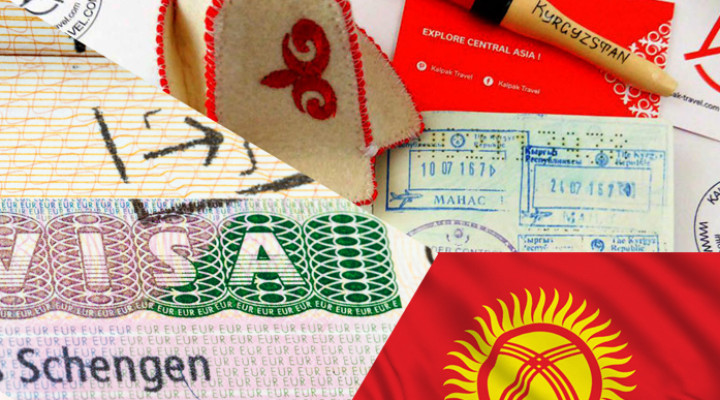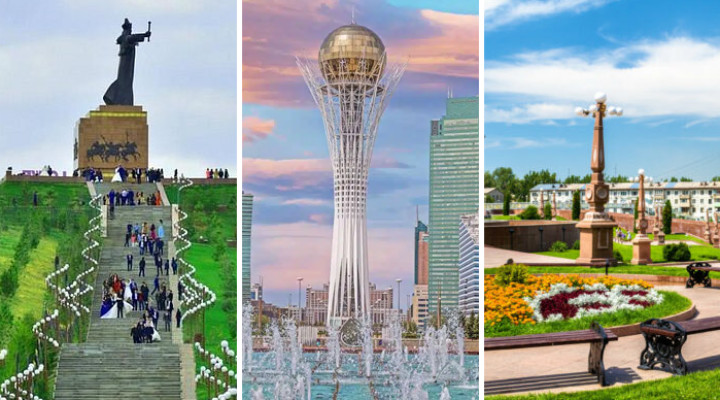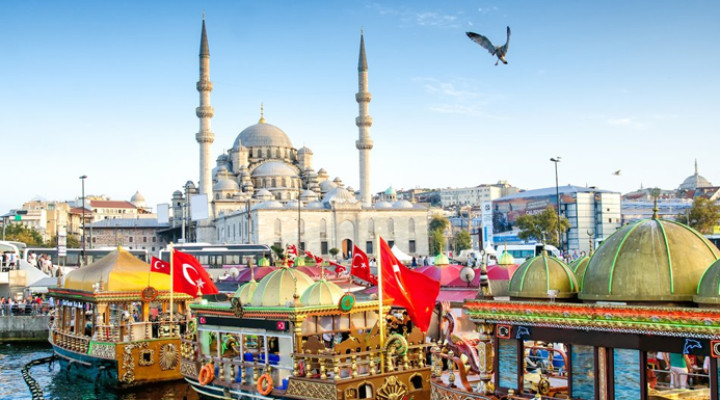About Tajikistan
About Country Cheat Sheet
Tajikistan is divided into: one autonomous region, 2 regions, the Districts of Republican Subordination, Dushanbe - The capital city.
Total: 4,130 km, Border Countries (4): Afghanistan 1,357 km, China 477 km, Kyrgyzstan 984 km, Uzbekistan 1,312 km
Tajikistan is Central Asian country. Tajikistan Geography is small and the country is nestled between Kyrgyzstan and Uzbekistan to the north and west. On the east side is China and on the southern side is Afghanistan. The country’s surface area is primarily mountains as 93% of Tajikistan is covered by mountains. Pamir Mountains and Alay Mountains are the two principal ranges. These two ranges give rise to many glacier fed rivers which are used for irrigation purpose. Tien Shan is another major mountain range in the northern part of the country. Among the mountains two major population centres are in the lowland of Panj River in southern part and Fergana Valley in the northern part of the country. Dushanbe is the capital city of Tajikistan.
Tajikistan nature mostly comprises mountains as more than half of the country lies above the height of 3,000 m. Fergana valley is the most densely populated area in entire Central Asia. You can explore the beauty of country the best when you travel Tajikistan on your own.
Climate and Weather in Tajikistan
Tajikistan Climate is multi-type. It is continental mainly and in some pars subtropical, and semiarid. Tajikistan also has some desert areas. As there is change in elevation, there is drastic change in climate too. Though lower level regions in Fergana valley are shielded by mountains from Arctic air masses, still temperature goes below freezing point for over 100 days in a year. The climate is arid in subtropical south-western lowlands. Average temperature in this region is high. In lower parts of the country average temperature during the month of July is from 23 to 30 °C and in the month of January it remains between -1 to 3 °C. In eastern side of Pamirs average temperature goes up to 10 °C in July and down to - 20°C in January. Thus Climate in Tajikistan is generally good at all levels of elevations.
Tajikistan Weather is generally soothing throughout the year. Capital city Dashunbe has warm summers, short and rain abundant winters, long spring with frequent rains and dry autumn. However, Best time to visit Tajikistan is from April to October.
History of Tajikistan
Tajikistan History goes back to times before history. The land of Tajikistan as we know today has been inhabited since around 4000 BC. Different tribes settled in here and since those times Tajikistan was absorbed into Persian Achaemenid Empire around 5th or 6th century BC and this started Tajikistan being under rule of different empires for a long time. Alexander the Great was next to conquering the region and he merged the region into Hellenistic Greco-Bactrain Kingdom. Around 5th century, Arabs were responsible to introduce Islam into the area which was then supplanted by the Saminid Empire in 9th to 10th century. After that Mongol ruled the region from early 13th century to late 14th century and then Timurid Empire took over and ruled till early 16th century. This was followed by Turkic Rule and Persian and Bukharan rule till 1868. Then came Russians and captured Tajikistan in late 19th century.
History of Tajikistan is fascinating as the land was under continuous foreign rules and lastly it came under Russian rule. It fought a four year battle against Bolshevik control in 1917 but was finally merged by Russians. Tajikistan finally was declared independent in 1991. Since then it is flourishing despite suppression of hundreds of years.
Culture and Traditions in Tajikistan
Tajikistan Culture is a result of thousands of years of diverse people inhabitation in the region. Tajik culture is quite similar to that of Afghanistan and Iran. Common language, beliefs and habits can be observed in these three parts of the world. Currently majority of the population in Tajikistan follows Islam religion. Muslim population largely shaped the culture, art, food, music and festivals in the country. Family value is at the core of Tajikistan culture. People are generally family oriented. Big families live together under one roof. People of the country have preserved their culture and traditions passed onto them by their ancestors quite well. They are also quite hospitable and friendly to the visitors from outside. Though Tajiks are said to be conservative but things are changing.
Folk art is vital part of Tajikistan Tradition. Festivals are generally religious ones. Navruz, the Muslim New Year is celebrated in a big way. Tajik people are also superb in craft work. They specialize in textile making and embroidery. They also do decorative arts like carving, furniture and jewellery making. Old handicrafts making art has been preserved here and it can be seen very clearly in clothes like shawls, women’s dresses, skull cap with embroidery and daily domestic articles.
Food and Cuisine in Tajikistan
Sweet dishes are main part of traditional Tajikistan food. People begin with Halwa and tea. After that they move to other items like soups and meats. They finish the meal with Pilaf. National dish of the country is Kabuli Plov, a dish made of rice with shredded yellow turnip or carrot, pieces of meat. They all put together are fried in vegetable oil or mutton fat. Green tea is national drink. Food is like ceremony in Tajikistan. Tajiks consider food very sacred especially bread. They don’t throw breads on the floor. They don’t cut it with knife either. They break every piece of it carefully. Thus Tajik food is much respected element in the life of Tajik people.
Tajik cuisine is traditional cuisine of the country. The cuisine also has many similarities with its neighbouring Russian, Afghan and Uzbek cuisines. Fruits and dairy products are very common part of the cuisine. Tea is served with meals and also consumed quite often between meals. Tajiks also offer tea to the visitors served hot in a china pot without sugar. Tea is so popular that you will find lot of Choykhona or teahouses in the country. This is a most common place for gathering of people. You can have good time too at these places similar to western style coffee house.
Tajikistan’s official native language is Tajik. Some Central Asian countries also share this language, but it has retained its genuine origin amidst colonial rule. Tajik language reflects its country’s history and culture.
Tourism
Tajikistan Tourism
Tajikistan is a small country which is slowly being
discovered by tourist for its mountains, lakes, rivers and the flavour
of its food. The tourism industry of Tajikistan is
starting to climb the ladder of being a travel destination in Central
Asia. The country lays 3000mts above sea level and offers various
opportunities to see and explore the country. This is the advantage that
Tajikistan has over its neighbouring countries for being named the
high-altitude landscape in the world. Among the natural splendour are
the small villages scatted around, and sometimes it’s not easy for the
people to live in such regions. But they always welcome the guests to
their country with great hospitality.
Dushanbe Tourism
Dushanbe is the capital city of Tajikistan which is
cosily located among the mountains. The name means Monday in the Tajik
language as it was on a popular Monday marketplace that the city grew on
the village. The main street of the city is Prospekt Rudaki. Dushanbe
is a city in a constant state of flux that’s still trying hard to grow
alongside poverty. The history of civil war which destroyed the streets
in the 90s has lined up the place with leafy good boulevard line and in
ruins. However, the street and the city are now undergoing enormous
change and there are a number of things to do and explore the city of
Dushanbe.
Different Types of Tourism in Tajikistan
1. Historical Tourism in Tajikistan
Tajikistan was under the rule of Russia for a long time, and after its
independence, it still underwent through a lot of government changes and
civil war. Peace was finally agreed among rivals in the year 1997.
There were many who fled the country during the wartime. And, history
has left its remnants in the form of monuments which are of religious
and historical importance such as Khujand, Istaravshan, Dushanbe,
Iskanderkul, Penjikent, The Pamir Mountains, Murghab and many others.
2. Cultural Tourism in Tajikistan
The culture of the country as we know today has completely transformed
and their culture is similar to the countries of Iran and Afghanistan.
There are two different cultures which prevail in the highlands and the
metropolitan cities. You can learn more about their culture and
traditions by visiting towns, cities, colourful oriental bazaars, visit
majestic fortresses, and some cultural places such as Museum of National
Antiquities, Hisor Fortress, National Museum of Tajikistan and many
others.
3. Nature Tourism in Tajikistan
Tajikistan is basically a mountainous region which makes the land of
the country 90% covered by mountains. The highest point of the country
is Ismoil Somoni Peak. It has rich flora and fauna because the whole
place is mountainous. You will find many different kinds of species of
animals and birds in the reserves of Ramit, Dashtijum etc. There are
also many lakes and glaciers among the mountains of Tajikistan.
4. Honeymoon Tourism in Tajikistan
Tajikistan is a country filled with so many natural wonders and architectural splendour which makes it a suitable destination for a honeymoon.
It’s a romantic country filled with nice and pleasant people who will
greet and welcome you to any place you travel. Some of the best honeymoon destinations in Tajikistan are Yamchun Fort, National Museum of Tajikistan, Delfin Aqua Park and many others.
5. Health and Wellness Tourism in Tajikistan
Tajikistan is still on the trail to attract people to its health and
wellness centre. It’s a country still struggling to develop and it’s
keeping its head up to promote health tourism. There’s a
Soviet-era sanatorium nestles in the mountain of Gissar range. It’s
located on Khoja Obi Garm and known for its radon filled waters which
have attracted visitor across Tajikistan.
6. Culinary Tourism in Tajikistan
The food of the Tajiks is similar to that of the Russians and Afghans
and Osh is their national dish. Most of their food is always served with
flatbread and its necessary to have in for any kind of meal. Some of
their popular food is Oshi Palov, Qurutob, Sambusa, ShirChoy and many
others.
7. Nightlife Tourism in Tajikistan
The nightlife in this country is quite in comparison
to other countries of Central Asia. Khujand and Dushanbe are the two
cities where you can find a happening nightlife otherwise you have to
see around in the rural districts. In Dushanbe, there are plenty of
clubs, bars, and restaurants as there are a number of working
professionals with many tourists as well.
8. Winter Tourism in Tajikistan
Winter is a good time to travel for those who love mountain views, snow
peaks. But, it’s an adventure to go see the Pamirs in this season. One
of the ways that connect the Pamir highway is the Khargush pass. You can
also try skiing activity here in the winter time with facilities of
modern resorts, ice skating, snowmobile rides and a couple of nice
comfortable hotels and resorts to spend a nice winter.
Travel Guide
Tajikistan Tour and Travel Guide
Tajikistan is a country covered with rugged mountains
which is popular for climbing and hiking activities. It’s an unexplored
destination filled with fascinating natural landscape and history that
produces a breathtaking sight for visitors to see and admire. As much as
it is remote, there are so many places that have not been touched and
explored by many. This way it makes the country still green, clean and
beautiful as nature made it. Since most of its territory is covered in
mountains, you will find some the best places here to see mountain tops,
landscapes, peaks, hot springs, villages, culture etc.
Dushanbe Travel Guide
It is the capital city with a population of over 80,000 people as per
the record of 2016. It is also known to be the largest city in the world
and has easily accessible sightseeing options. It has some of the
stunning attractions which will heighten your imagination including the
ancient sleeping Buddha at the Tajikistan National Museum. Farther
afield there are old forts, glaciers, mysterious salt caves, and ancient
stone carvings that make most travellers come back to see the presence
of such beauty.
1. Penny Wise Tajikistan
|
Items |
Price in Tajikistani Somoni (SM) |
Price in Dollars ($) |
|
Meal for 2, in inexpensive Restaurant |
32.5 |
3.17 |
|
Meal for 2, in mid range Restaurant, Three-course |
125 |
12.2 |
|
McMeal at McDonalds (or Equivalent Combo Meal) |
40 |
3.91 |
|
Domestic Beer (0.5 liter draught) |
8.43 |
0.82 |
|
Imported Beer (0.33 liter bottle) |
12 |
1.17 |
|
Cappuccino (regular) |
13.12 |
1.28 |
|
Coke/Pepsi (0.33 liter bottle) |
4.67 |
0.46 |
|
Water (1.5 liter bottle) |
3.5 |
0.34 |
|
Bottle of Wine (Mid-Range) |
84.5 |
8.25 |
|
Cigarettes 20 Pack (Marlboro) |
10 |
0.98 |
|
Taxi Start (Normal Tariff) |
11 |
1.07 |
|
Taxi 1km (Normal Tariff) |
3 |
0.29 |
|
Taxi 1hour Waiting (Normal Tariff) |
15 |
1.46 |
|
1 Min. of Prepaid Mobile Tariff Local (No Discounts or Plans) |
0.93 |
0.09 |
|
Internet/WiFi Charges (1GB ) |
49.57 |
4.84 |
* Prices are our approximation and may vary slightly.
* Prices are market prices of articles and may vary at restaurants and hotels.
2. Accommodation in Tajikistan
There are not too many hotels in Tajikistan, but there is another
option where you can stay other than the main hotels. There are clean
and well-maintained rooms in Dushanbe, but outside the capital, it hard
to find a hotel. However, it is possible to stay at government dachas in
Khorog which provides good amenities and within the standards of
comfort.
3. Travelling in Tajikistan
You can get in and around by hiring a car, taxi or a coach. There are
not too many car rentals offered in many parts of the towns and cities.
You can also get shared taxis which are available mostly in Dushanbe.
There are major buses and trolleybuses available in the city, but
intercity buses are not easily available.
4. Shopping in Tajikistan
Tajikistan has more of imported things in their shops and markets.
There are also traditional bazaars where a majority of the people do
their shopping. However, in Dushanbe, you will find many bazaars, the
most notable being Zelenny. Apart from Dusnabe, you will find shops and
bazaars in Khujand, Chkalov, Murghab where you can shop for almost any
items you like.
5. Best Time to Visit Tajikistan
The best time to visit Tajikistan is from the month of
June to mid-September. If you want to go for outdoor activities or if
you want to do some clear sightseeing and see the Pamir highway, this is
the best time of the year. Winter is also a good time for those who can
bear the winter.
6. Tajikistan Travel Tips
• Trains run to all the major destinations.
• Opt for a good homestays.
• Try the local and traditional food.
• Buy drinking water.
• Do not smoke in any bars, restaurants.
• Do not buy gems in Tajikistan.
• Keep your things and cash safe.
• Remain with their cultural etiquette.
• Always carry a photocopy of your passport.
• Do not walk through parks at night time.
Visa Information
Tajikistan Visa Information:
Documents Required:
• Scanned copy of Passport’s front Page and back page.
• 02 Passport Size Photographs white background.
• Original Passport will be required for visa stamping at least 10 days before departure.
• For 10 pax or bigger groups a group E-Visa will be given to you on
the day of departure at the Indira Gandhi International Airport.
• Corporate letter head will be required for requesting letter of invitation from destination countries.
Contact for more details about Tajikistan Tourist Visa!





